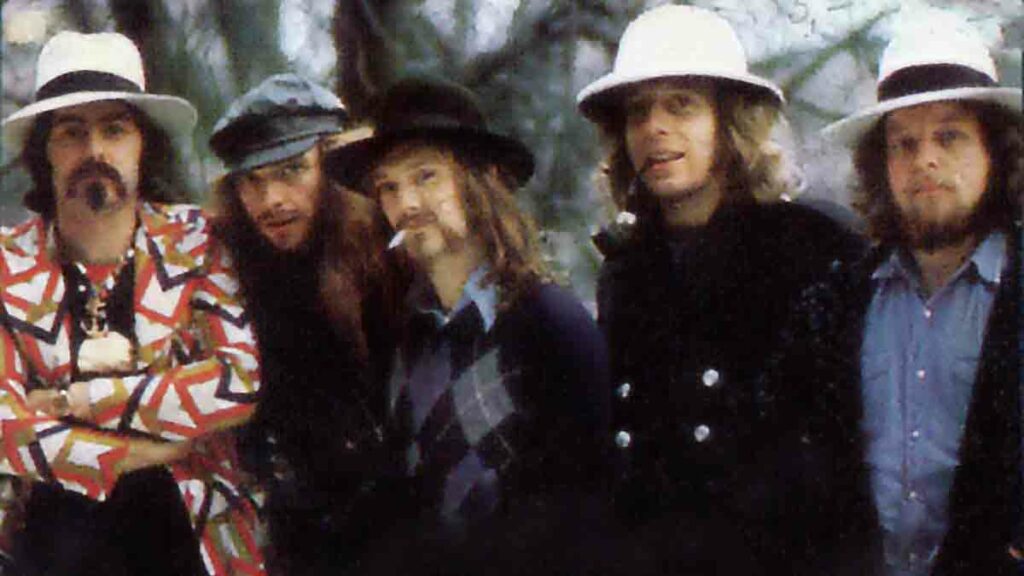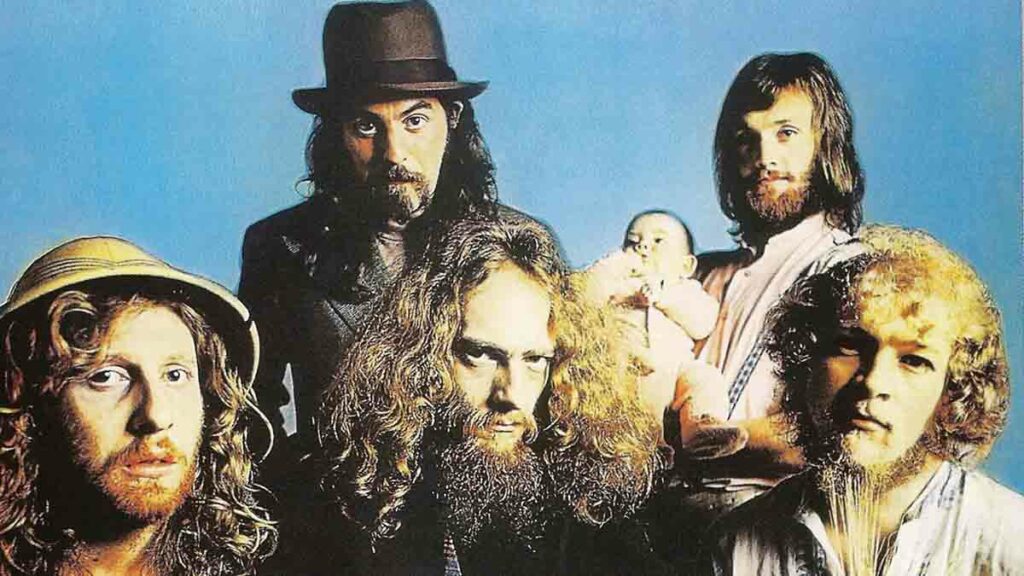In 1967, one of the most unique English bands, Jethro Tull, was formed. As the name, the musicians chose the name of an agrarian scientist who lived about two centuries ago. He improved the model of an agricultural plow, and for this he used the principle of operation of a church organ.
In 2015, bandleader Ian Anderson announced an upcoming theatrical production about the legendary farmer, with music by the band.
The beginning of the creative path of the band Jethro Tull
The whole story initially revolved around multi-instrumentalist Ian Anderson. In 1966, he first appeared on stage as part of the John Evan Band from Blackpool. Less than ten years later, the band's musicians entered the main lineup of Anderson's new Jethro Tull project, but for now, Ian and Glenn Cornick leave the band and go to London.
Here they are trying to form a new group and even announce the recruitment of musicians. The created group successfully performs at the jazz festival in Windsor. The musical ones characterize Anderson as a future star of the art-rock direction, and the Island recording studio concludes a three-year contract with him.
The original line-up of the Jethro Tull band included:
- Ian Anderson - vocals, guitar, bass, keyboards, percussion, flute
- Mick Abrahams - guitar
- Glenn Cornick - bass guitar
- Clive Bunker - drums
Success comes almost immediately. Firstly, the flute sounds in rock compositions. Secondly, the leading part of the rhythm guitar becomes another hallmark of the band. Thirdly, Anderson's lyrics and his vocals captivate listeners.
The group releases their first CD in 1968. This project becomes the only one in the band's career where the emphasis was placed on the blues guitar of Mick Abrahams. Ian Anderson has always gravitated towards a different style of musical expression of his inner world, namely progressive rock.
He wanted to create ballads in the style of medieval minstrels with hard rock elements, experiment with the sound of different instruments and vary rhythmic patterns. Mick Abrahams leaves the band.
Anderson is looking for a hard rock guitarist who can bring his ideas to life. He is negotiating with Tony Yaommi and Martin Barre.
With Yaommi, the work did not work out, but he nevertheless recorded several compositions with the group, and periodically worked with Anderson as a session guitarist. Martin Barre, on the other hand, worked with the musicians of Jethro Tull and soon became one of the virtuoso guitarists. The group's style was finally formed by the beginning of the recording of the second album.
He combined hard rock, ethnic, classical music. The compositions were decorated with pronounced guitar riffs and virtuoso flute playing. The leader of "Jethro Tull" gave music lovers a fresh sound and a new interpretation of ethnic material.
This has never happened before in the rock music world. Therefore, Jethro Tull became one of the five most popular bands of the late 60s and early 70s.

The Peak of Jethro Tull's Popularity
The real popularity and universal recognition comes to the group in the 70s. Their work is interested in all countries of the world. Millions of art rock fans are looking forward to the new Jethro Tull albums. The band's music becomes more complex with each new released disc. Anderson is criticized for this complexity, and the 1974 album returns the band to their original, simple sound. Music publications have achieved their goal.
Listeners, unlike music critics, expected further serious developments from the group and were dissatisfied with the simplicity and intelligibility of the musical material. As a result, the musicians never returned to creating uncomplicated compositions.
Until 1980, Jethro Tull released high-quality albums with an individual interpretation of the basics of art rock. The group has developed its style in such a way that no musical group has dared to imitate them throughout history.
Each disc presented philosophical works with a thoughtful concept. Even the rustic album of 1974 did not spoil the overall impression of the serious experiments of the Jethro Tull musicians during this period. The group worked steadily until the early 80s.
The history of Jethro Tull from 1980 to the present
The 80s of the last century brought elements of new sounds to the musical world. The development of the production of electronic instruments and computer innovations had an impact on the natural sound of the Jethro Tull group. The albums of the early 80s, in particular 82 and 84, had many musical episodes with an artificial sound, so uncharacteristic of Jethro Tull. The group began to lose its face.
Toward the middle of the decade, Anderson still finds the strength to return to the traditional style for the group. Two albums released in the late 80s took a confident leading position not only in the band's discography, but also in the history of rock music in general.
The album "Rock Island" has become a real lifeline for fans of art rock. During the years of the dominance of commercial music, Ian Anderson delighted intellectual music lovers with his new ideas.
In the 90s, Anderson minimized the sound of electronic instruments. He gives a big load to the acoustic guitar and mandolin. The first half of the decade is devoted to the search for new ideas and holding acoustic concerts.
It is no coincidence that the use of folk instruments led Anderson to search for ideas in ethnic music. He himself changed the way he played the flute several times. The albums released during this period were distinguished by their soft sound and philosophical reflections on life.
In the 1983s, Anderson continued to experiment with ethnic motifs. He releases albums with the band as well as his solo discs. The band leader released his first solo record in XNUMX.

There was a lot of electronic sound in it, and the lyrics told about alienation in the modern world. Like all subsequent solo discs of the Jethro Tull leader, this disc did not cause much excitement and interest among the public. But several compositions were included in the band's concert programs.
In 2008, Jethro Tull celebrated its 40th anniversary. The group went on tour. Then in 2011 the 40th anniversary tour of Aqualung took place, during which the band visited the cities of Eastern Europe. In 2014, Ian Anderson announced the breakup of the group.
Jethro Tull Golden Jubilee
In 2017, in honor of the "golden" anniversary, the group reunited. Anderson announced an upcoming tour and recording of a new album. The musicians currently in the band are:
- Ian Anderson - vocals, guitar, mandolin, flute, harmonica
- John O'Hara - keyboards, backing vocals
- David Goodier - bass guitar
- Florian Opale - lead guitar
- Scott Hammond - drums.
Throughout its history, the Jethro Tull group has given 2789 concerts. Of all the albums released, 5 went platinum and 60 went gold. In total, more than XNUMX million copies of records have been sold.
Jethro Tull today
Fans have been waiting for this event for 18 years. And finally, at the end of January 2022, Jethro Tull was pleased with the release of a full-length LP. The record was called The Zealot Gene.
The artists noted that they have been working harmoniously on the album since 2017. In many ways, the collection defies the conventions of modernity. Some compositions are saturated with biblical myths. “So far I feel that it is necessary to draw parallels with the biblical text,” the band's frontman commented on the release of the album.



